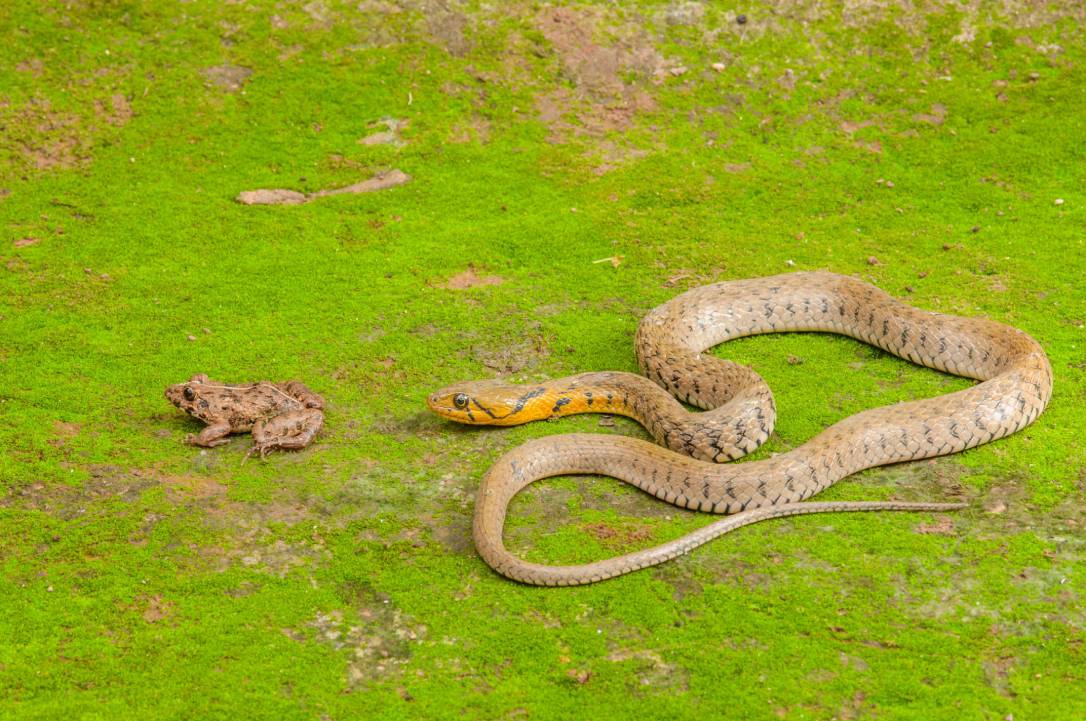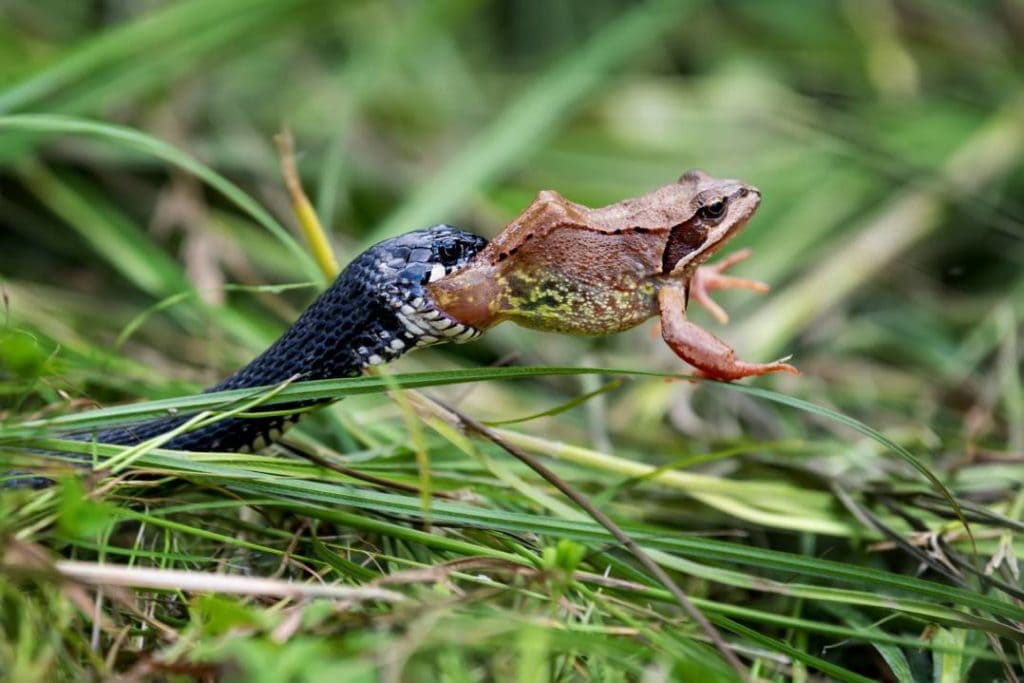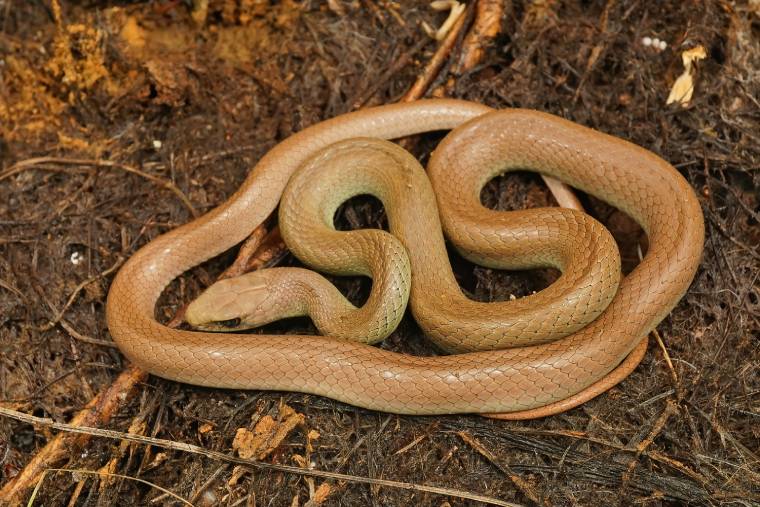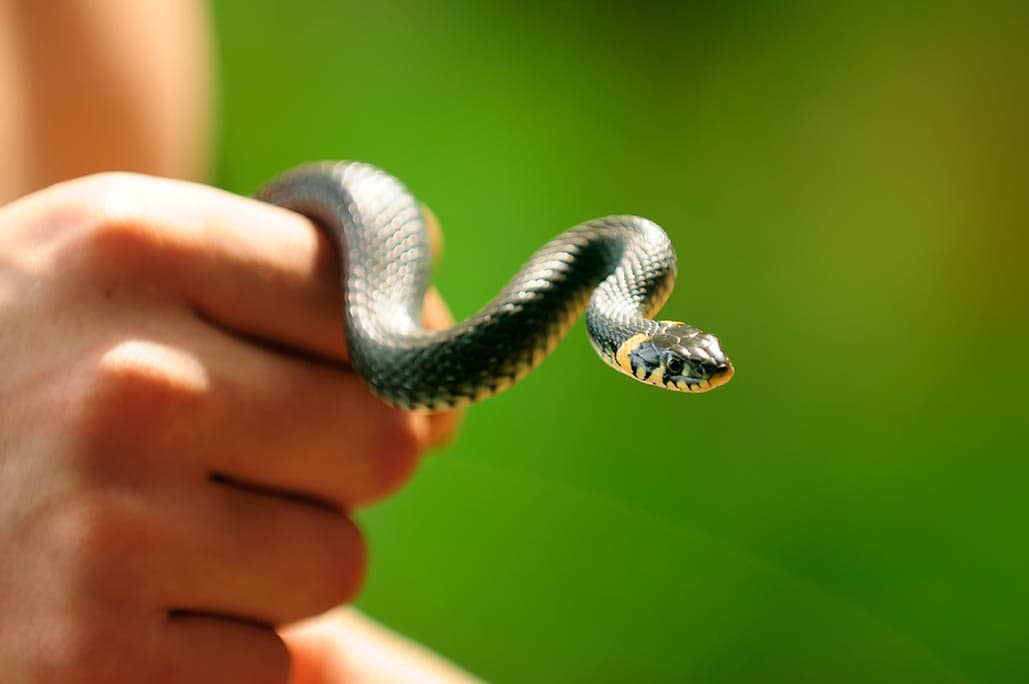
Snakes are often seen as one of the most frightening animals to humans; should frogs be scared of them too?
Snakes are obligate carnivores, and their diet heavily depends on prey availability. In areas where these two species coexist, a snake can eat a frog, though it might not happen as often as you think. Let’s find out why.
 The Snake Diet
The Snake Diet
Obligate carnivores are species that cannot survive on an alternative diet. Based on their physiology, reptiles such as snakes have very strict dietary requirements that make them unable to subsist on another animal’s diet or plant matter. While they can eat it once in a while, this is not something that they could do for long periods due to their inability to digest it.
Because of this, they need prey that is usually the same size or smaller than themselves. This has also affected their hunting behavior as these animals will use ambush and constriction techniques to catch them.

Why Do Snakes Eat Frogs?
Frogs are easy prey for snakes. Snakes do not have teeth, so they can’t chew food and swallow it. Instead, they need to use their long sharp tongues to push the frog’s body down its throat whole. To do this successfully, a snake has two methods – striking or constricting. A snake will usually strike at the frog and catch it with its mouth or narrow it by coiling it before suffocating it.
What Happens If a Snake Eats a Frog?
If a snake doesn’t do anything with its prey immediately after catching it, then the frog will try to escape or fight back by attacking the snake’s head by trying to bite it. Since this is also not effective against an animal that has no teeth or mouth muscles, the snake will just swallow the helpless frog whole (or part of it if it tries to escape). The frog will either be digested over time or regurgitated almost immediately if the snake tries too hard to eat it.
A snake will likely try and avoid eating frogs as they are very tricky targets. Although they can eat them if they need to, many other animals are easier prey for a snake to hunt down. Some frogs may still have toxic secretions on their skin (like the poison dart frog) which could cause signs ranging from breathing problems to paralysis in any animal that eats them. This would also include most snakes!
What Types of Snakes Eat Frogs?
Snakes will naturally eat all kinds of animals. Most snakes that are known to eat frogs are not venomous and belong to the Colubridae family. Snakes from this family are usually small, slender, and nonvenomous. Some examples include the eastern Redbelly snake (Storeria occipitomaculata), the ring-necked snake (Diadophis punctatus), and the common garter snake (Thamnophis sirtalis).
Other types of frog eaters are the larger snakes that don’t need venom to attack prey, such as pythons from Australia or anacondas. Pythons do constrict their meals, but they also swallow their food whole. A python can eat an animal two or three times its size, so it’s no surprise that they can also swallow something as large as a frog.
Well-known frogs eaten by snakes include the North American bullfrog and leopard frog (Rana pipiens). In contrast, the European green toad (Bufo viridis), Congo dwarf clawed frog (Hymenochirus boettgeri), and cane toad are often preyed on by pythons. They are easier for them to catch as they move slower than some other prey.

How Do Frogs Defend Themselves from Snakes?
Frogs have a number of defense mechanisms that they can use to protect themselves from predators. Most frogs are small and agile enough to escape most predators, especially those that hunt by sight. Their slippery skin also helps them getaway as it makes them harder to grab onto or hold on to. If a frog is ambushed by a snake or lizard, they will try the following methods:
Can Frogs Eat Snakes?
Nature is a chaotic place, and sometimes the hunter becomes the hunted. Some giant frogs eat snakes, and they can do it in their own way. The African bullfrog (Pyxicephalus adspersus) is a large arboreal species that is known to eat up to 10 times its body weight in lizards, frogs, toads, and small mammals.
Most of the time, though, these giant frogs will kick their prey out of trees or swallow them whole. They might later regurgitate indigestible parts near water sources for other animals, including birds and fish, to feed on. Frogs are not likely to stalk and ambush snakes like eagles or ocelots do because they’re not fast enough. It has been observed in some species of frogs that once they catch one, they will start to swallow it only to stop when they realize that they aren’t their usual food of insects or small animals.

What Else Do Snakes Eat?
Though snakes are reptiles, most of them have a varied diet that includes any other animal or four-legged creature smaller than themselves. They eat rats, mice, lizards, and frogs regularly but would not usually pass up an opportunity to hunt for something larger like a bird, small deer, goat, or dog if the chance should come by.
When given the option between two choices of equal sizes, such as an opossum and a rabbit, they will almost always go for the bigger meal. “A snake is just happy to eat,” said Marshal Hedin, reptile conservation coordinator at the California Department of Fish and Game. “If you put a snake in the wild that had never eaten anything, it would be just as happy to eat a frog as it would be a mouse.
Related Reads:
 Conclusion
Conclusion
Snakes most definitely do eat other types of frogs, but it’s not usually their first choice. They prefer to go after bigger prey like humans and large animals. The main difference between snakes and larger predators that hunt by sight is that most reptiles don’t need to see their victims to catch up with them. Their sense of smell (which is controlled by their tongue) allows them to detect heat and prey even when they can’t see them. From there, snakes can choose to lay in wait for an unsuspecting prey or to slowly go for the ambush.
Featured Image Credit: C. Aphirak, Shutterstock

 The Snake Diet
The Snake Diet





